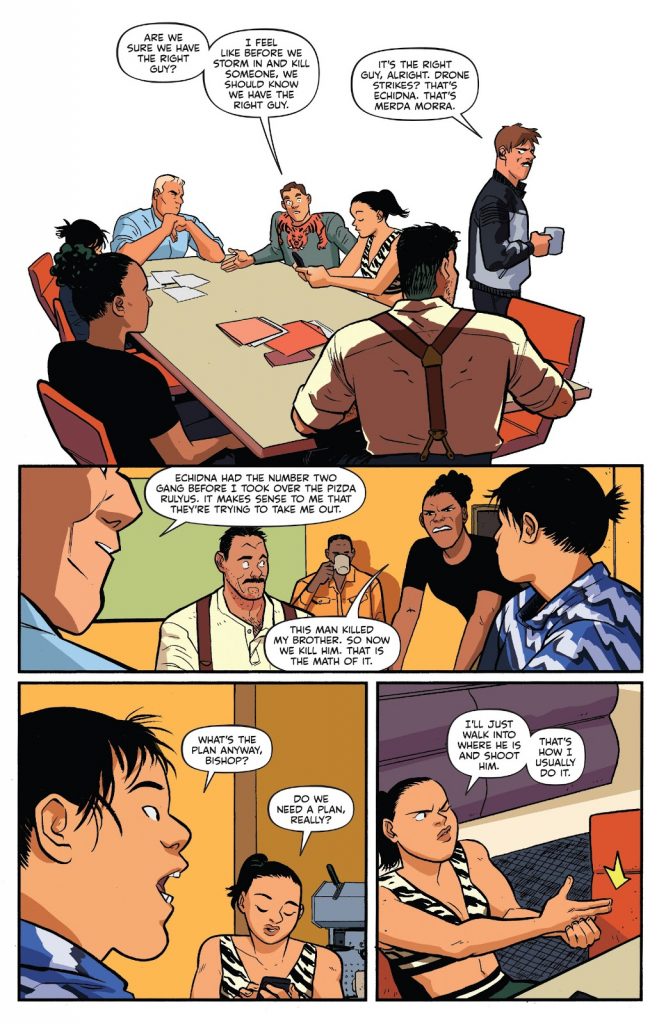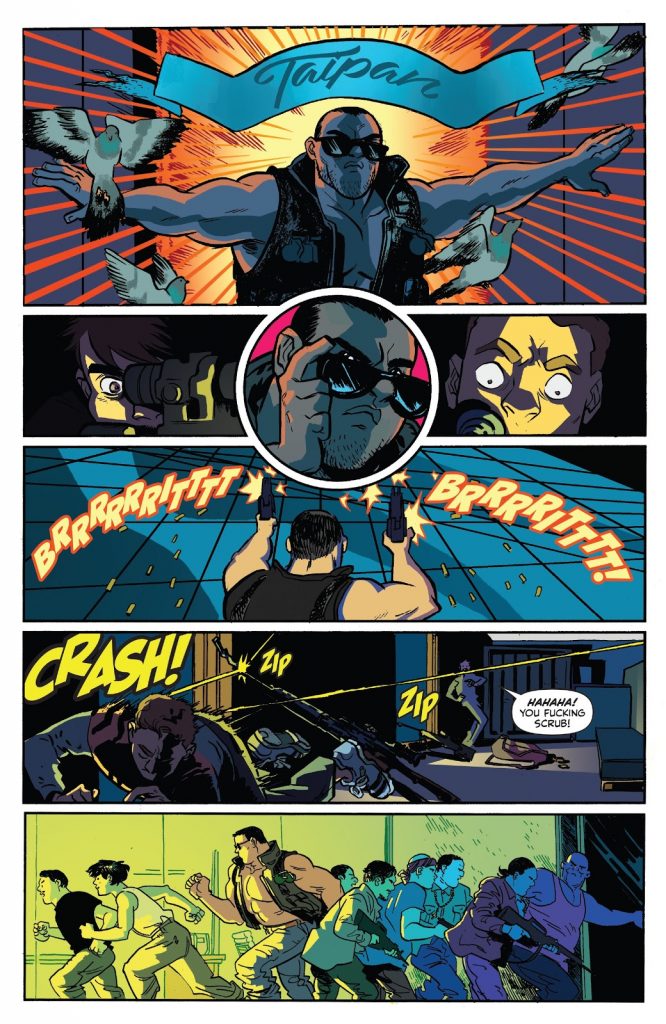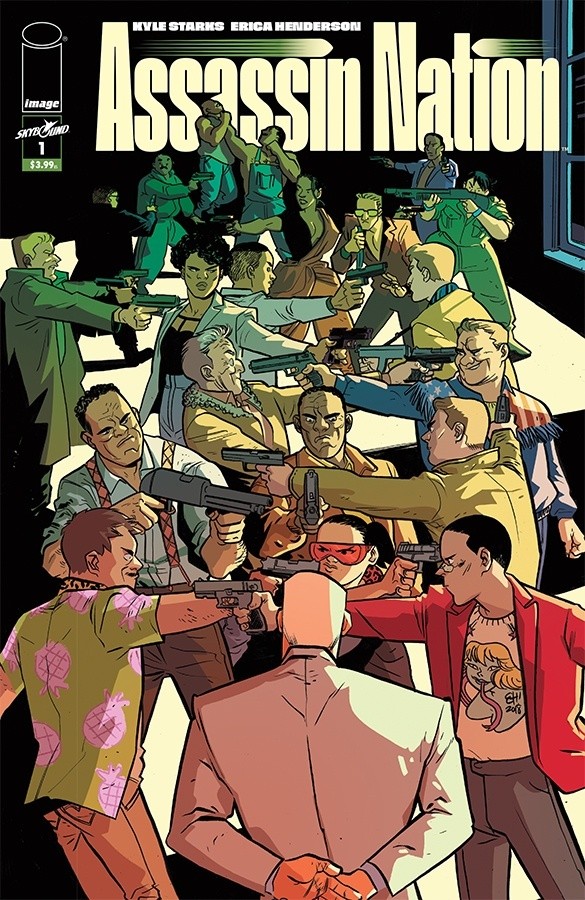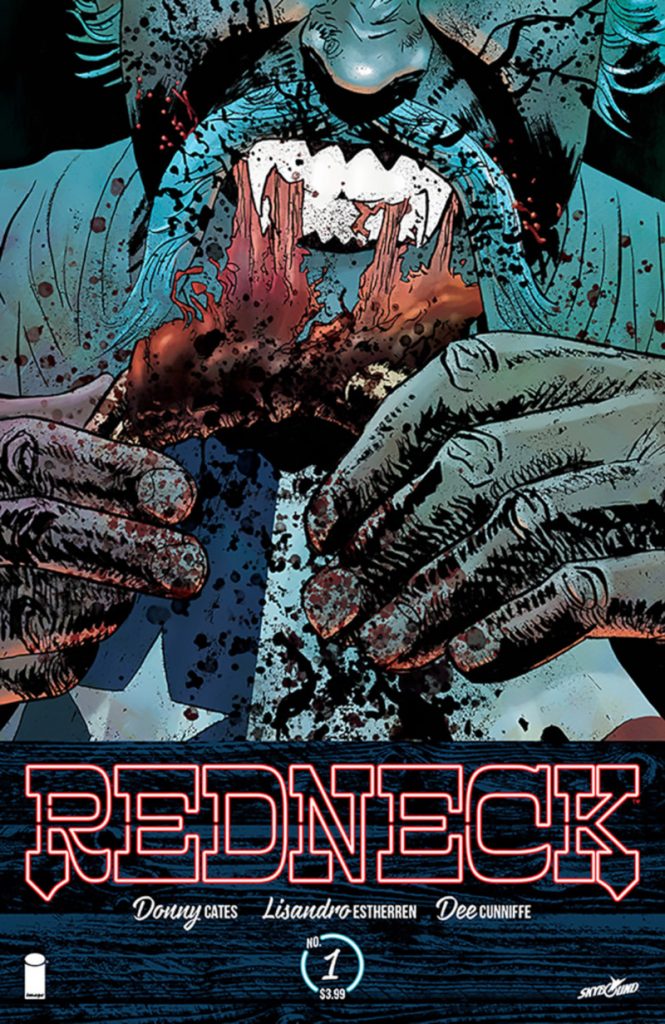Assassin Nation Week: Jon Moisan on the Role of an Editor
The editor of Skybound/Image's Assassin Nation walks us through the role of an editor
It seems we all feel like we know what editors do in comics, but do we really? I once thought I did until I actually talked to a few editors and I was like, “Oh, okay! That’s not what I thought you did!” Editors can be all kinds of things at once. The good cop. The bad cop. The traffic cop. Of course, they’re not just varying types of police, they’re the people who help make sure comics reach their potential and do so in a timely manner.
Jon Moisan is a former editor at Marvel, and after honing his skills there, he moved onto Skybound/Image where he edits titles like Assassin Nation, Redneck and more, and he’s very, very good at his job. Today, we’ll be talking with Moisan about his role at Skybound and everything he does for the former title in today’s entry into Assassin Nation Week, as we get an inside look at what exactly an editor actually does. Give it a read, and hey, join us for tomorrow’s concluding interview as Skybound’s Editor-in-Chief Sean Mackiewicz joins us to talk about the production side of comics.
You’re not the only editor at Skybound, so let’s start at a very basic place. How do you get onto a book like Assassin Nation? Is it because you brought the book in from Kyle and Erica, or is it something else?
JM: Assassin Nation actually has its roots in the job I had before I started at Skybound. I used to be an assistant editor at Marvel and ended up working on tons of books, but one of my absolute favorite books to work on was The Unbeatable Squirrel Girl. I got to know Erica Henderson fairly well while working on it and made sure to keep in touch after I migrated west to Skybound.
Once I was established at the new company, I would periodically reach out to her and ask if she was interested in doing something here. I think it took two years of asking before she was finally interested in a project, I want to say sometime around NYCC 2017? Anyway, she came to me and said that there might be something but she’d want to work on it with Kyle Starks, who she’d been looking to work with for awhile. Thankfully, everything lined up and everyone who read the pitch loved it and we were able to do the book. And since I was the one that brought it in, it was up to me to wrangle it.
Once you’re on a book, how involved are you during a title’s development at Skybound? Is that kind of situational, as in your involvement on Assassin Nation might be different than what it is on Redneck, for example?
JM: It definitely depends on the book. Some creators are pretty steady and don’t really need a firm editorial hand while others definitely benefit from the guidance. On a book like Assassin Nation, Kyle and Erica are both masters at what they do. From the idea to the writing to the art, they have a pretty good handle on things. That being said, all books need editorial guidance to start, which is where I first come in. Most of the heavy lifting was done in the outline phase. I worked with Kyle and Erica pretty extensively to get the story into a place where all parties were happy.
With script and art, it’s mostly about trims and tucks. If scripts are being written or drawn, your story should be more or less locked down at that point, hence the heavier focus on outlining. A lot of that also has to do with Assassin Nation being a five issue mini. We can see the beginning, middle and end, so it’s easier to plan things out from the start. On a book like Redneck, which is now in its fourth arc, things are a little more fluid. Donny and Lisandro both have a handle on the story and characters by now, so a lot of my job there is mostly as a sounding board to chime in when there needs to be a course correction. Both editorial styles have their ups and downs, but I think a good editor should be able to find which style suits a book best.
You talked about how most of the heavy lifting on Assassin Nation was done in the outline phase. What exactly did that “heavy lifting” entail on your end?
JM: By “heavy lifting” that just means going through the story itself and making sure it’s as clear and concise as possible. Kyle is one of the best writers working today, in my opinion, so even the “heavy lifting” wasn’t that heavy. It was mostly making sure that script length and pacing worked out. Kyle came to us with a pretty fully formed story already done.

In regards to the outline phase, for the issue we’re focusing on – issue #3 – how specific does the outline get? Is it broader beats that are “locked down” before the scripting phase, as you put it, or is it more detailed than that?
JM: Yeah, it’s pretty broad. The outline itself describes each character and then dedicates roughly a page per issue to laying out the plot. That means that all action and dialogue are kept brief, if it’s even there. It’s mostly a chance for us to make sure the bones of the story work in a broader sense. Once Kyle sent in the script, that was when we focused on notes about specific dialogue and panels.
So let’s talk about the series on a more granular basis, with our focus being on that aforementioned third issue. At what point do you enter the picture on an individual issue? Are you looking at everything – scripts, art, etc. – before it’s handed to the next step in production?
JM: As an editor, I tend to oversee the production of an issue at every step. That means that after working out the outline with Kyle, I also take a read of the script and send notes back, until we’re both happy with where it’s at. Some editors tend to want to put their fingerprints all over a comic, but I think it’s silly to not have your talent 100% happy with the work. Once the script is approved by all parties, it goes to Erica, where she does rough pencils for approval. Generally, my notes for Erica are very straightforward. From there, pages go to inks and color and notes are given at each step.
What kinds of things are you looking for during this phase? Is it more of the “trims and tucks” that you mentioned earlier, or can it get deeper depending on the issue?
JM: It really depends on what the issue is, but once script and rough pencils have been approved, it’s really more about cosmetic changes than anything heavier. As an editor, I really should be catching any major mistakes or corrections before we get past either of those stages. It’s a waste of time for all involved to have to go back and redo things that I could have caught earlier.

To a degree, you’re the first reader, in a way, which means you can definitely provide insight into the way things are working to the creative team. And in issue #3, there’s a pretty long action sequence, a lot of which involves characters moving around and interacting from distances in ways that are related to each other. Is that something you look at with perhaps a finer toothed comb from a logic standpoint on the art side, or is that too in the weeds when you’re editing at the issue level?
JM: It’s definitely something to consider, but I try not to get too granular on that kind of thing. If there’s a glaring error or something that just doesn’t make sense, I’ll definitely point it out, but if the story flows and reads well, there’s no sense in bogging Erica down with logistics that ultimately don’t have a bearing on story.
In talking with letterer Deron Bennett, he shared that he just interacts with you in the process of production. Are you kind of the fulcrum that the creative team works around on a Skybound book, or does it really depend on the creative team and the project?
JM: It sort of depends on the project, but every book I work on has me acting as a sort of traffic director. I’ve worked on a wide array of books and on some of them, the team is in constant contact and email each other regularly, while on others it’s just easier to be the point person. Ultimately, I like to work in a way that makes things easier on creators; I never want to bog down the process.
Once the issue is complete on the creative side, what happens next, and how much are you involved during the rest of the process? Is it your baby throughout, more or less?
JM: Yeah, I see the book from beginning to end at all points of production. Starting with the outline, I also see a book through the art and lettering, as well as writing solicits and working with our designers on cover and backmatter. I’m also the point person on making sure the book goes to the printer and gets approved. As editor, it’s my job to deal with all the logistics that go into making a comic. The less glamorous side, as it were. That being said, I still look at each book as my baby and try to give the same level of detail and attention that every other creator is giving because the book deserves nothing less.
Thanks for reading the fourth interview from Assassin Nation Week. Come back tomorrow for our final chat, as Skybound’s Editor-in-Chief Sean Mackiewicz takes us through the production process on the series. Also, if you’re enjoying this content, consider subscribing to SKTCHD to get content like this on the regular!


